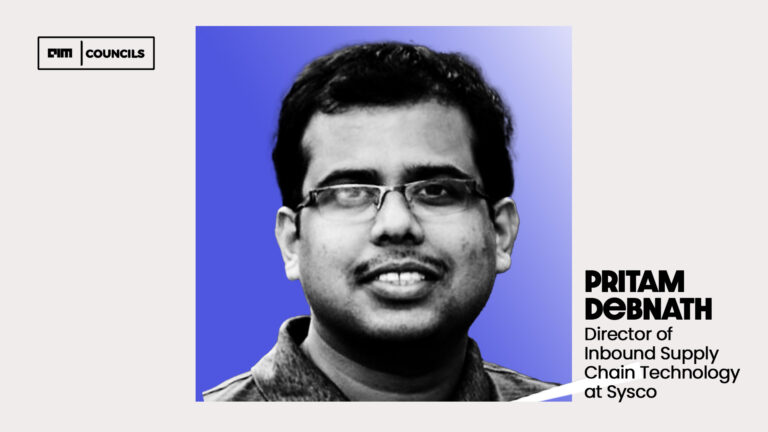In today’s GenAI boom, many organizations are focused on building “wrappers” – simple interfaces layered on top of large language models (LLMs) to deliver chatbots, summarizers, or content tools. These wrappers offer quick wins but often miss the deeper opportunity: reimagining how we represent and act on the world using generative intelligence.
The real breakthrough comes not from feeding existing data into an LLM, but from redefining how the world is represented in machine-readable form. That means designing new kinds of tokens—structured snapshots of evolving systems—that capture the dynamic states of customers, supply chains, portfolios, or policies. This reframing transform business problems into sequential prediction and decision-making tasks, enabling the use of powerful tools originally built for language, like Transformer architectures.
It’s a subtle but important shift: we’re not just applying models to data – we’re engineering new representational systems that allow businesses to model, reason about, and optimize the real world with GenAI’s full ecosystem of algorithms.
From Language to Systems: Generalizing the Sequence Paradigm
Transformers revolutionized NLP by treating language as a sequence of tokens. But the same approach can be applied far beyond text/vides/images. Any system that evolves over time—customer journeys, treatment paths, trading patterns—can be represented as a sequence of discrete states. These aren’t just records; they’re tokens in a newly imagined state space.
- In retail, a customer’s token might represent items browsed, loyalty tier, and past interactions.
- In healthcare, a patient token could reflect labs, prescriptions, and risk scores.
- In logistics, a shipment token might contain location, delay signals, and upstream bottlenecks.
Once we construct these tokens, we can use the full GenAI toolbox—transformers for sequence modeling, diffusion for exploration, RL for goal-directed learning. We’re not adapting LLMs to business data—we’re adapting business representations to the generative modeling paradigm.
This unlocks something far more strategic than prediction: agency. These systems can anticipate, adapt, and act.
Modeling, Not Just Inference
By viewing complex systems as evolving token sequences, businesses can do more than infer likely outcomes—they can influence them. This is where reinforcement learning comes in. RL agents operate over these state spaces, choosing actions that maximize long-term value—whether that’s reducing churn, stabilizing supply chains, or preventing fraud.
Critically, these tokens aren’t off-the-shelf. They must be engineered to express what matters in a domain: signals, thresholds, temporal dependencies. That engineering work—framing your system as a generative sequence—is the unlock. It’s what allows your organization to step into the GenAI era not just as a user, but as a creator of intelligent infrastructure.
Business Applications: Reframed, Rebuilt
Below is a refined snapshot of where this approach is already showing impact. These sectors have begun reframing their core systems as generative sequences—and are using that foundation to unlock predictive, personalized, and adaptive workflows.
| Domain | State Definition | LLM Task | RL Role | Business Value |
| Healthcare | Diagnoses, meds, labs, clinical notes | Predict events, recommend treatments | Optimize care pathways | Personalized care, early intervention |
| Retail | Product interactions, cart behavior, loyalty score | Recommend products, predict churn | Maximize customer lifetime value | Higher conversion, retention |
| E-Commerce | Browsing behavior, purchase history, clicks, location | Real-time recommendations, bundling | Adaptive promotion and targeting | Increased basket size, AOV |
| Web Personalization | Session history, content interaction, user profile | Content ranking, page layout generation | Optimize for engagement and retention | Higher CTR, session duration |
| Supply Chain | Inventory, demand signals, transport data | Demand forecasting, disruption prediction | Inventory and route optimization | Lower cost, greater resilience |
| Finance | Trade history, market data, portfolio positions | Predict prices, detect anomalies | Optimize asset allocation | Reduced volatility, better returns |
| Fraud Detection | Transactions, devices, time/location, user metadata | Anomaly detection, pattern synthesis | Adaptive thresholding | Lower false positives, adaptive detection |
| Cybersecurity | Event logs, access patterns, attack indicators | Alert triage, summarization, behavioral modeling | Threat mitigation, active defense | Shorter detection and response time |
| HR & Talent | Role, performance, interaction data, career trajectory | Predict attrition, personalize learning paths | Optimize team composition | Better retention, improved development |
| Education | Student progress, course interactions, knowledge checks | Personalized tutoring, curriculum generation | Adjust instruction in real-time | Higher mastery, engagement |
| Legal / Compliance | Case metadata, documents, citations, timelines | Summarize cases, predict next action | Automate document review and prioritization | Lower cost, improved accuracy |
| Customer Support | Interaction history, issue type, product data | Summarize tickets, suggest resolutions | Optimize agent routing or triage | Faster response, improved CSAT |
| Marketing | Engagement signals, campaign response, behavior graphs | Generate personalized copy or campaign ideas | Optimize channel and messaging timing | Increased ROI on ad spend |
| Product Management | Feature usage, telemetry, NPS, session flows | Prioritize features, detect drop-offs | Optimize roadmap sequencing | Data-driven product development |
Each application starts not with model tuning—but with state space design. What matters? How does it change over time? Once those questions are answered, the rest—modeling, optimization, orchestration—follows.
From Representations to Agents
This new paradigm enables a shift from using AI for isolated tasks to deploying adaptive agents that operate across the enterprise. These agents learn patterns, propose actions, and even collaborate—treating the business as a living system rather than a set of disconnected functions.
And because we’re building on the robust, flexible ecosystem developed for generative AI—transformers, attention, tokenization, reinforcement loops—we can bring maturity and scalability from day one.
Final Thought: It’s About Framing
The next wave of enterprise AI isn’t about better answers—it’s about better questions. And those start with how you frame the system.
Are you feeding data into a tool? Or are you designing a new language for how your business evolves?
The most strategic organizations are doing the latter. They’re inventing new tokens. Crafting dynamic state spaces. And using GenAI not just to interpret the world—but to shape it.












